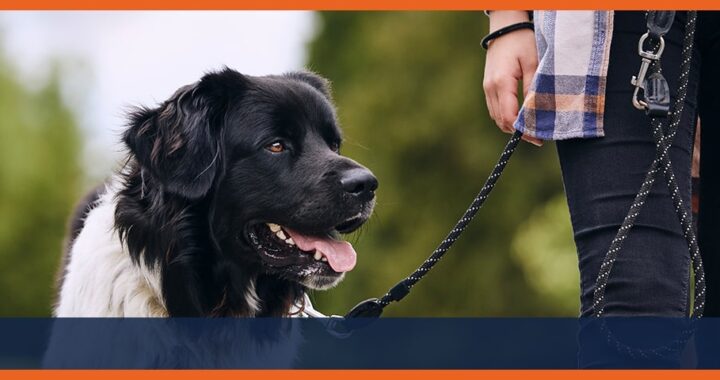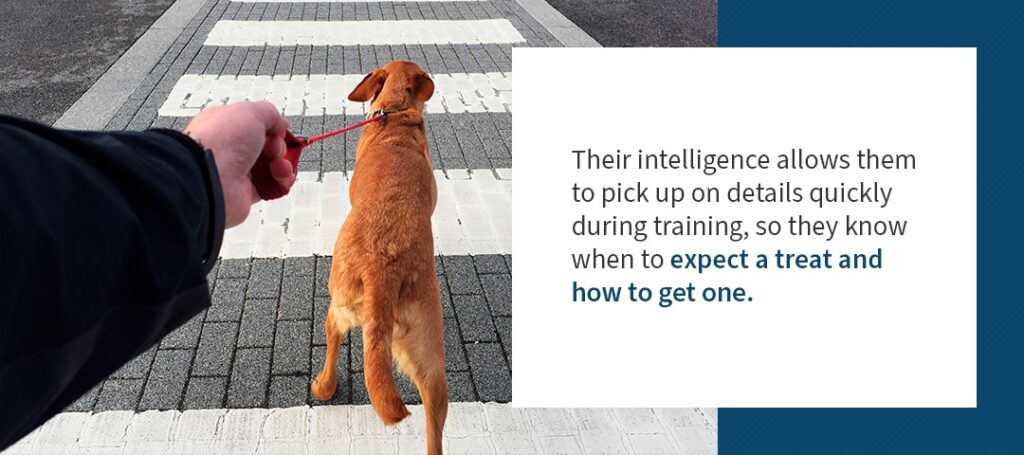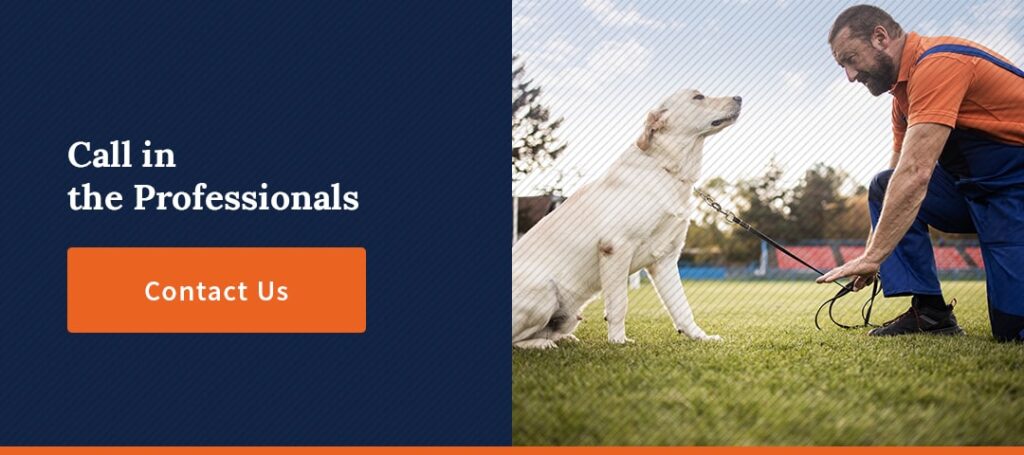Leash aggression is a common behavior for dogs of all ages. Without the proper training, dogs can feel overwhelmed on walks where they face distractions from other animals, people or objects. Going on a relaxing walk with your fluffy companion can seem like a distant goal if they do not like their leash.
Correcting this behavior can take time and patience, but you can achieve it! Take a look at the following tips to reinforce positive reactions toward leashes, distractions and walks.
Behaviors to Look for in Leash-Reactive Dogs
Leash reactivity may occur when your dog feels agitated or overwhelmed while walking on a leash. A leash can feel restricting around their throats which can cause them to show aggression toward you or at the sight of other dogs. Reactive dogs do not respond well to external factors on walks, which can cause owners to stop taking them out for exercise.
If you want to keep your dog active with frequent walks, you can start to take note of their behavior on a leash now to make the training process more straightforward in the future.
Common leash reactivity behaviors include:
- Lunging: When on a walk, you may notice your dog lunges toward other animals, objects along the path or people passing by. Whether this behavior results from aggression or excitement, it can make each walk challenging to complete.
- Freezing: Some dogs feel overstimulated by a leash and completely freeze. They sit or stand still until you remove the leash from their collar. This behavior can result from fear if they are not used to the material.
- Playing or biting: When on a leash, some dogs begin to bite the leash playfully because they think the rope is a toy. They may not recognize that the leash is for walking, so you must establish the difference between play time and going on a walk to reduce leash reactivity — even if the playing looks pretty funny.
- Running and pulling: Dogs can begin to run uncontrolled when they feel overwhelmed. With their speed and strength, taking off can be a challenge for owners who have to chase after them.
Establishing a Safe Space for Your Dog
Dogs are incredibly intelligent animals. However, they may not understand why they have to go through training in the first place. They can observe your positive and negative reactions to certain behaviors, but they will not realize until training is over that they need to adapt to a leash.
To ensure a positive training experience, you can start correcting leash aggression inside your home. The environment where you live with your dog is, most likely, where they feel the most comfortable. Any open space in your home is perfect for beginner training one-on-one with your pet.
Patience, positivity and a calm attitude can make your pet feel stress-free during training. If they feel comfortable during training, they’ll be more able to relax in their favorite spot after a training session.
You can create a safe space in your home for your dog to unwind after training, allowing for a calming period of recuperation. Resting is essential to the training process so your fluffy friend can retain the new commands they learned in a comfortable setting. Establishing a designated space in your home for your dog’s relaxation also makes training inside the house more manageable.
Implement Positive Reinforcement
Positive reinforcement is essential for training your leash-aggressive dog. This step allows you to reward them for any progress they make as they get used to being on a leash.
Dogs repeat behavior that they know you will reward them for completing. Their intelligence allows them to pick up on details quickly during training, so they know when to expect a treat and how to get one. Your job is to implement goodies effectively so they know when you will introduce them during the training process.
When Should You Give Treats During Training
Consistency is vital when implementing treats into your positive reinforcement routine. Make sure to reward your furry friend only when they can make progress — even when it is tempting to reward them for being too cute.
You should give them a treat during training when:
- They behave positively toward the leash: You can start beginner training at home by placing the leash in front of them on the floor or in the palm of your hand. Encourage your dog to sit calmly with the leash in their presence without running off or biting the material. Repeat the introduction process until they show no reaction to the leash. Give your dog a treat whenever they do not behave negatively toward it.
- They do not react to clipping the leash to them: After your dog becomes more comfortable around the leash, you can try to clip the leash onto their collar or harness to see their reaction. The weight of the leash might confuse them at first. Remember to establish a calming presence and take as much time as necessary to make your dog feel relaxed. Similar to the first step, you can reward your dog with a treat each time they show little to no reaction to this difference.
- They walk calmly with the leash: Beginner training at home is also beneficial for starting to walk your dog with a leash in a familiar environment. You can practice walking them in your backyard or a room large enough to walk laps around. After they let you clip the leash on their collar or harness, hold the leash firmly beside you so they walk next to you. You can reward them with a treat if they can take calm steps with the leash on.
- They can maintain a steady speed: As you begin walking, take slow steps first to avoid scaring your dog or encouraging them to run off. You can encourage your dog to walk at their own pace as long as they remain calm and are aware of distractions around them. React calmly to external factors to promote a relaxing tone with your dog during the walk. If they can pass any distractions without reacting to them negatively, reward them with a well-deserved treat.
These steps are only the beginning of a long training process to ensure a positive relationship between your dog and its leash. A little practice goes a long way, and staying consistent allows you to get back to enjoying relaxing walks with your companion.
Call in the Professionals in Elkridge, MD
Leash aggression training can take time to correct if you do it alone. Luckily, Off Leash K9 Training is here to help! Our dog trainers in Maryland specialize in establishing a calm environment for your fluffy friend to enjoy as they learn to walk on a leash comfortably. Aggressive behavior will minimize after our eight private lessons, where your dog will get used to commands and other canine friends.
Take a look at our dog aggression training package, or contact us today with any questions.



